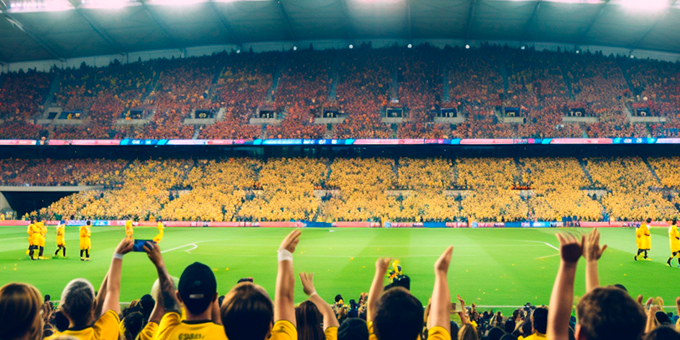The FIFA Women's World Cup Controversies
The Women’s World Cup 2023 is an important time to reflect on how in many countries, women and girls have to fight even to get onto a playing field. And once they do, they face threats, retaliation, unfair pay, harassment, and even sexual assault.
FIFA Women's World Cup has experienced a few controversies over the years. Here are some notable ones:
1. Gender inequality: An ongoing controversy surrounding the Women's World Cup is the issue of gender inequality. Critics claim that FIFA has not provided equal resources, funding, and promotion for the women's tournament. Disparities in prize money, media coverage, and overall investment are major points of contention. FIFA is said to have $4 billion in reserves and expected to earn $11 billion in revenue in the 2026 World Cup cycle, but gender discrimination keeps FIFA from leveling the pay playing field at the Women’s World Cup.
FIFA funds each national team with an average of $1.5 million a year. Unfortunately, this money intended to build women’s sport is too siphoned off by national federations before it reaches the players. FIFA doesn’t use its leverage to ensure that every national federation treats women athletes fairly. A recent study by FIFPRO, the global professional footballers’ union, revealed that 29% of women players said that they had not received any payments from their national teams for World Cup qualifying tournaments.
2. Artificial turf: In the lead-up to the 2015 Women's World Cup held in Canada, there was controversy over the decision to use artificial turf instead of natural grass in all tournament venues. Many players and advocates argued that this decision was discriminatory since the men's World Cup had always been played on natural grass. The issue sparked a lawsuit by a group of international players, although it was ultimately withdrawn before the tournament began.
3. Pay disparity: The issue of unequal pay between male and female players has been a recurring controversy. The prize money awarded for the Women's World Cup has historically been significantly lower than the men. The total prize money for the 2019 Women's World Cup was $30 million, compared to $400 million for the 2018 Men's World Cup. FIFA President Gianni Infantino announced that every player in the 2023 tournament would get at least $30,000 and then reverted his decision at the news conference opening the games to say that how and whether to pay the women players would be up to the national federations.
FIFA has failed to protect women and girls in the sport – apart from these pay issues even basic workplace systems to safeguard players from sexual and other abuses do not exist.
4. Refereeing decisions: Like any major sporting event, the Women's World Cup has seen its share of controversial refereeing decisions. Some instances include questionable penalty calls, offside decisions, and disciplinary actions. These incidents have often sparked debates about the consistency and fairness of officiating in women's football.
5. Host selection: The process of selecting the host country for the Women's World Cup has faced criticism in the past. Allegations of corruption and bribery have plagued FIFA, leading to concerns about the transparency and integrity of the selection process. The bidding process for the 2015 and 2019 tournaments, in particular, faced allegations of irregularities and favoritism.
6. Player safety and accommodations: There have been instances where player safety and accommodations have come under scrutiny. In the 2019 Women's World Cup, some teams expressed concerns about the quality of training facilities, travel arrangements, and overall support provided by FIFA and the organizing committee. These issues have raised questions about the level of attention and investment given to the welfare of female players.
This year, the mothers of players on the Jamaica women's national team had to set up a crowdfunding campaign to cover the costs of competing in the 2023 Women’s World Cup. Reggae Girlz players posted their “utmost disappointment with the Jamaica Football Federation” over “subpar planning, transportation, accommodations, training conditions, compensation, communication, nutrition and resources” online.
7. Injuries: Ahead of the 2023 Women's World Cup, concerns of ACL injuries in women's sports grew, with a number of high-profile injuries and noted lack of women-focused research despite the greater likelihood of women suffering the injury. In June 2023, it was reported that there would be at least 36 players likely to have participated in the tournament either missing it with or having just returned from ACL injury. The injury being the cause of so many significant players being unavailable for the World Cup was a cause of controversy over the lack of measures taken around the injury, as well as reportedly creating tensions between national teams and the players' clubs.
It's important to note that these controversies highlight areas where improvements are needed to ensure the growth and development of women's football which has become the fastest growing sport in the world today.
United Nations (UN) Women and FIFA are working together during the current Women's World Cup on a Football Unites the World campaign, highlighting major gender equality issues.
The campaign involves two big calls to action. The first is to Unite for Gender Equality - to realise gender equality as a fundamental human right and as critical for a peaceful and sustainable world. The second is to Unite for Ending Violence against Women, in response to some of the most pervasive human rights violations worldwide. The calls to action on gender equality will be promoted via the team captains' armbands, pitch side digital LED boards, large flags presented on the pitch, giant screens in stadiums, and via social media.
To help close the gender gap in football, FIFA raised the prize money for the 2023 Women's World Cup to $150 million - triple the amount available in 2019 - as part of a three-step gender equality plan but still far below the $400 million at the 2018 Men’s World Cup or the $440 million awarded in the 2022 Men’s World Cup.
We are far, far away from an ideal ecosystem for women’s sports but we hope small steps like these will continue to fuel a hunger to address other flaws with urgency and compassion.
Sources: forbes.com / Wikipedia.com













Leave a comment on this post